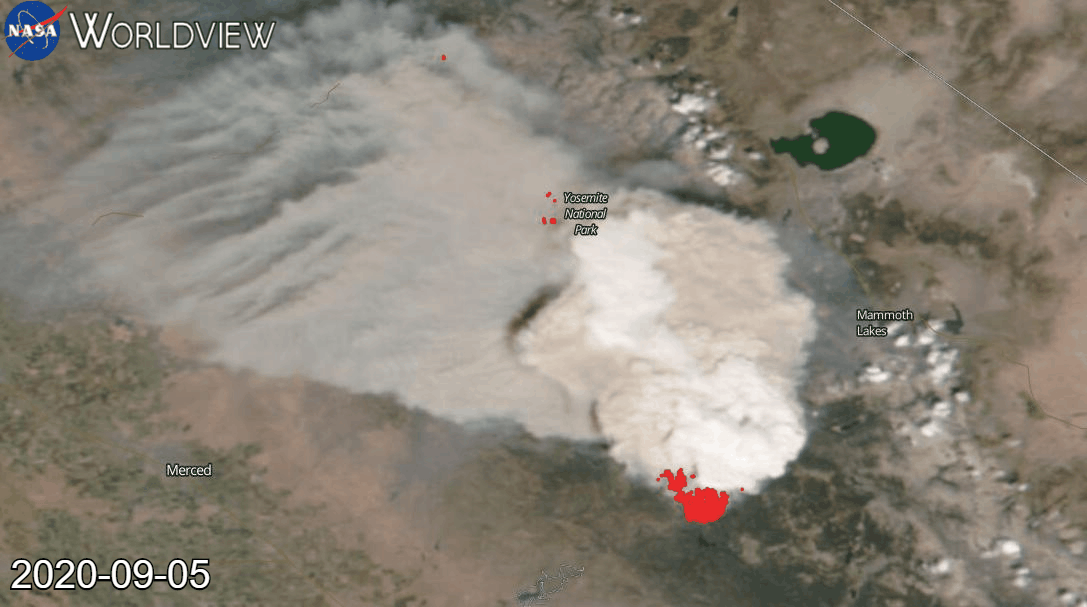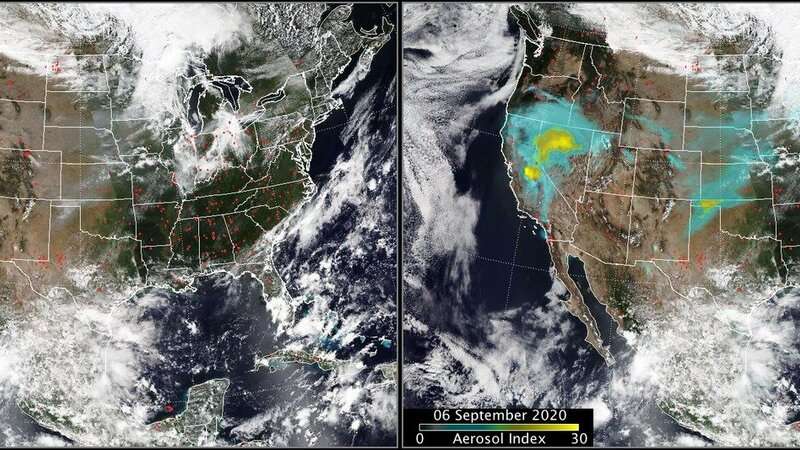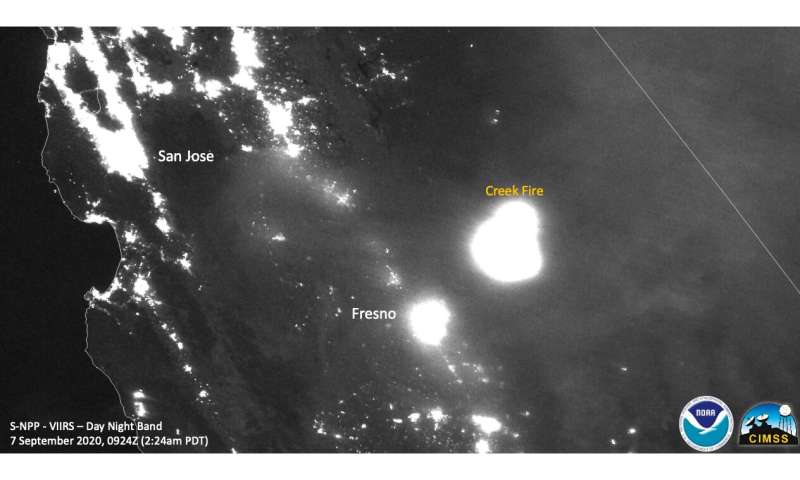#California’s creek fire creates its own pyrocumulonimbus cloud
“#California’s creek fire creates its own pyrocumulonimbus cloud”

On Friday September 4, 2020 at about 6:44 PM PDT the Creek Fire began in the Big Creek drainage area between Shaver Lake, Big Creek and Huntington Lake, Calif. NASA’s Suomi NPP satellite captured these images of the fire on Sep. 05 through Sep. 07, 2020. From the series of images the spread of the fire can be seen in the outward movement of the red hot spots, although the huge cloud on the 6th obscures all readings due to its size.
The huge, dense cloud created on Sep. 05 and seen in the Suomi NPP image was a pyrocumulonimbus cloud (pyroCb) and the resulting smoke plume that grew upward was spotted and confirmed on Sep. 06, 2020. A pyrocumulonimbus cloud is also called a cumulonimbus flammagenitus. The origins of the latter word are from the Latin meaning “flame” and “created from.” This perfectly describes a cloud that is caused by a natural source of heat such as a wildfire or volcano. Rising warm air from the fire can carry water vapor up into the atmosphere causing clouds. Any type of convective cloud can be created. In this case, the cumulonimbus, or thunderhead cloud, was created. Precipitation and lightning can also occur with these types of clouds creating a risk that the fire will expand due to increased wind from precipitation downdraft or by creating new fires due to lightning strikes. These are all things that fire managers must keep in mind while continuing to try to fight the fire.
“The pyrocumulonimbus cloud created aerosol index values indicate that this is one of the largest (if not the largest) pyroCb events seen in the United States,” according to Dr. Colin Seftor, Atmospheric Scientist at Goddard Space Flight Center in Greenbelt, Md.

This fast-moving fire is burning on both the Madera and Fresno districts of the Sierra National Forest. The fire began near the communities of Big Creek and Huntington Lake and moved swiftly prompting evacuations. Timber in the area has approximately 80-90 percent tree mortality from the bark beetle providing ample fuel for the fire’s spread.

Inciweb reports that the fire has grown to 135,523 as of Sep. 08, 2020. The cause of the fire is still under investigation. Weather concerns continue to plague firefighters as hot and very dry conditions remained over the region through Labor Day with relative humidity very low. Forecasts expect terrain driven winds with overnight temperatures between 70-75 degrees Fahrenheit and daytime temperatures between 90-95 degrees Fahrenheit.
Citation:
California’s creek fire creates its own pyrocumulonimbus cloud (2020, September 9)
retrieved 9 September 2020
from https://phys.org/news/2020-09-california-creek-pyrocumulonimbus-cloud.html
This document is subject to copyright. Apart from any fair dealing for the purpose of private study or research, no
part may be reproduced without the written permission. The content is provided for information purposes only.
If you want to read more Like this articles, you can visit our Science category.
if you want to watch Movies or Tv Shows go to Dizi.BuradaBiliyorum.Com for forums sites go to Forum.BuradaBiliyorum.Com



